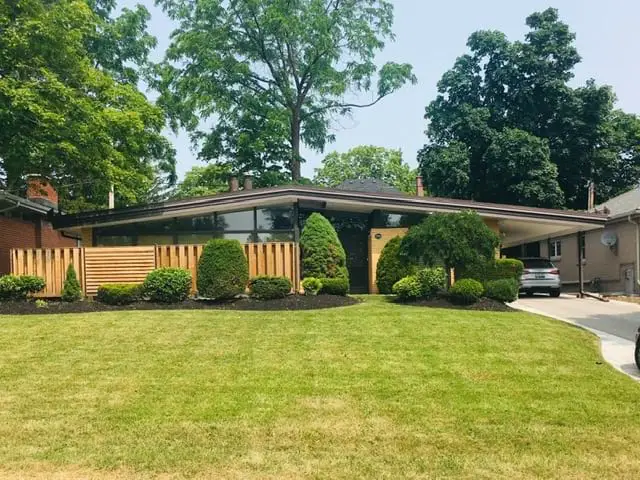
Recently, we’ve had the pleasure to be introduced to enthusiastic owners of beautiful midcentury homes via our Facebook Group for midcentury home owners. After scrolling through and stumbling upon a 1954 Eb Zeidler home in Peterborough, Ontario, we reached out to homeowners Sonny Keyes and Jasmine Hum to tell us the story of their midcentury gem.
Ensuing restorations to fit their personal taste, the couple had their dream home set and after hearing them talk about it, it’s unmistakably clear they wouldn’t have it any other way.
First of all, could you tell us a little bit about your background?
I’m a musician, I used to play in an 80s power-pop band called The Kings, then I worked in post-production audio for decades, and now I’m mixing sound for TV series. My wife, Jasmine Hum is an established visual artist, and is represented by several galleries.
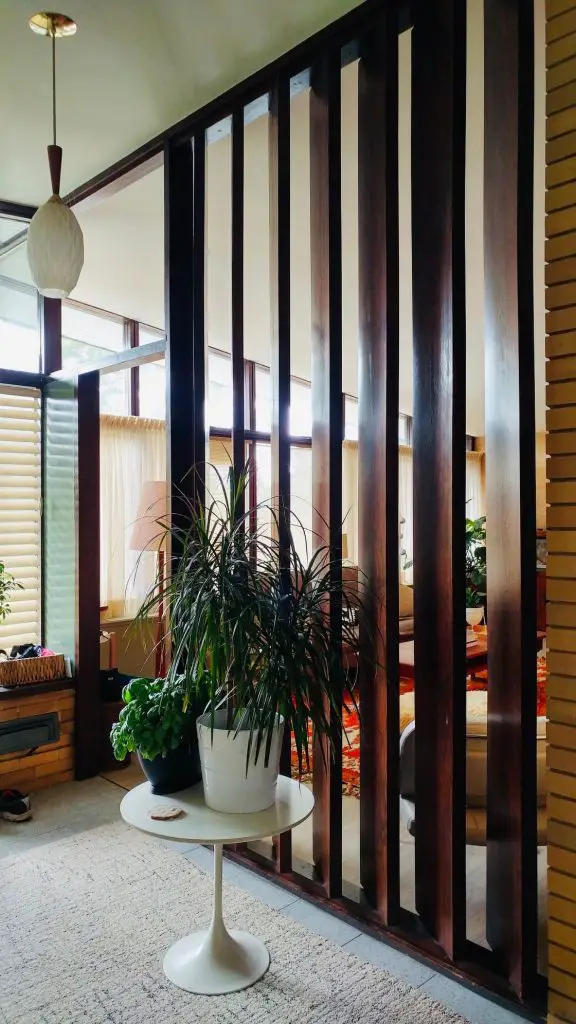
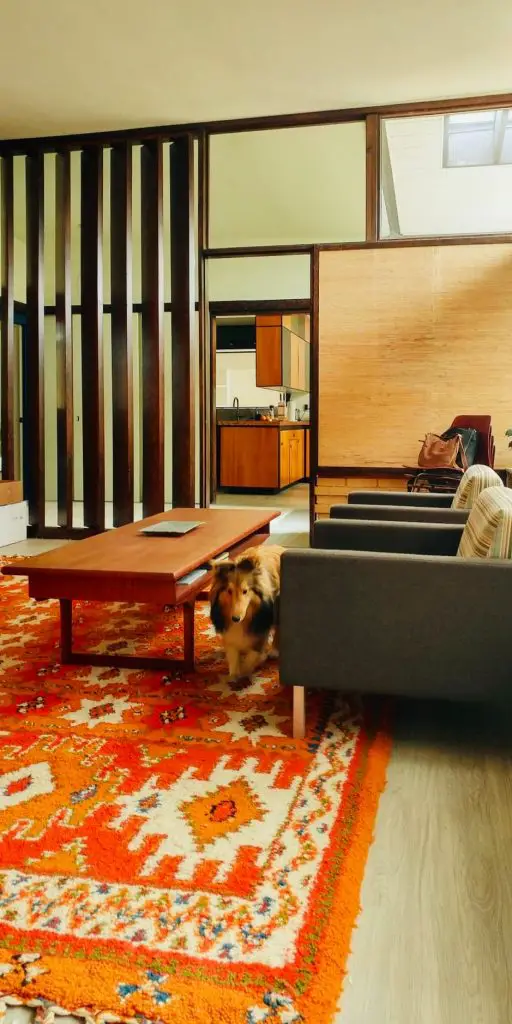
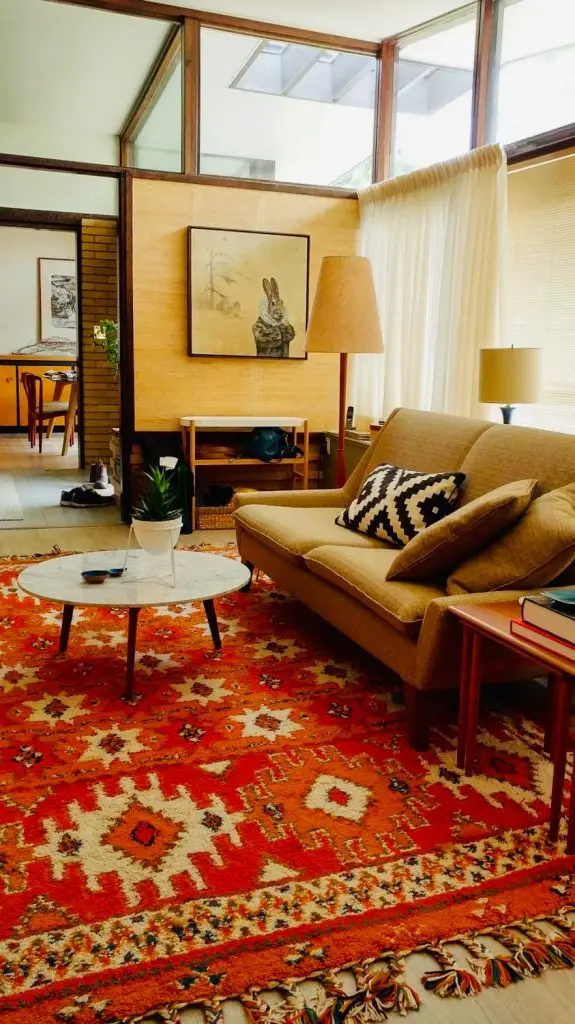
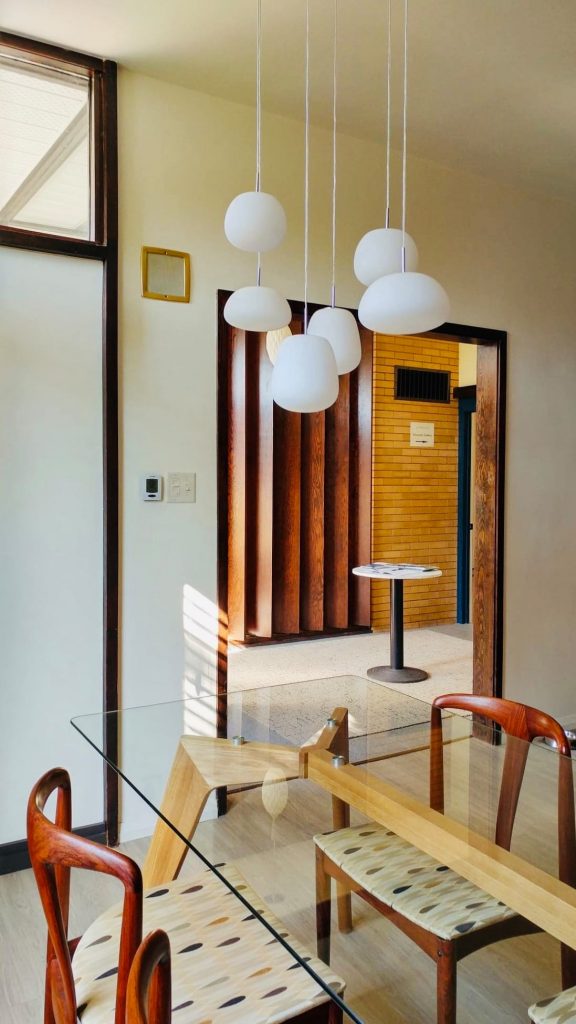
How did you come to live in your house and what drew you to the mid-century style?
We had to drop a painting off at our friends’ house north of Toronto, and we were taken by the beautiful midcentury modern architecture of the Seneca Heights neighbourhood where they live, and especially by their house, designed by Stanley Bennett Barclay.
It reminded us both how much we both love and appreciate this style, and we resolved to find one for ourselves. Jasmine is an avid researcher, and after poring over internet articles for weeks, she determined that, although they’re not that easy to find in this part of the world, Peterborough was a good place to look for midcentury modern houses.
We started visiting, but found nothing appropriate listed. One time we drove out to look at a house that had sold recently, and we saw this house across the street, but it wasn’t for sale.
Nevertheless, I was charmed by it, and actually found it on Google Street View and sent a screen-capture to our agent with a note, “If something like this came up, then we would be interested.” Incredibly, seven weeks later, this exact house came up for sale, and we rushed out to look, finding everything we were looking for. There was a bidding war, and the day our agent called to say the house was ours was one of the most exciting days in memory!
What do you think was so special about this period in American design?
In the case of our house, I think it would be more appropriate to comment on the period in European design, as Zeidler had just graduated from the Bauhaus Institute. Either way, it was a time when the world was on the verge of a new, modern age, and the architects of the day were encouraged to try new things with new building materials and bring that modernity into fruition.
A young girl visiting our house recently looked around and told me, “Wow, your house is really futuristic!” and I have to agree. Even today, over 60 years after it was built, it still feels futuristic.
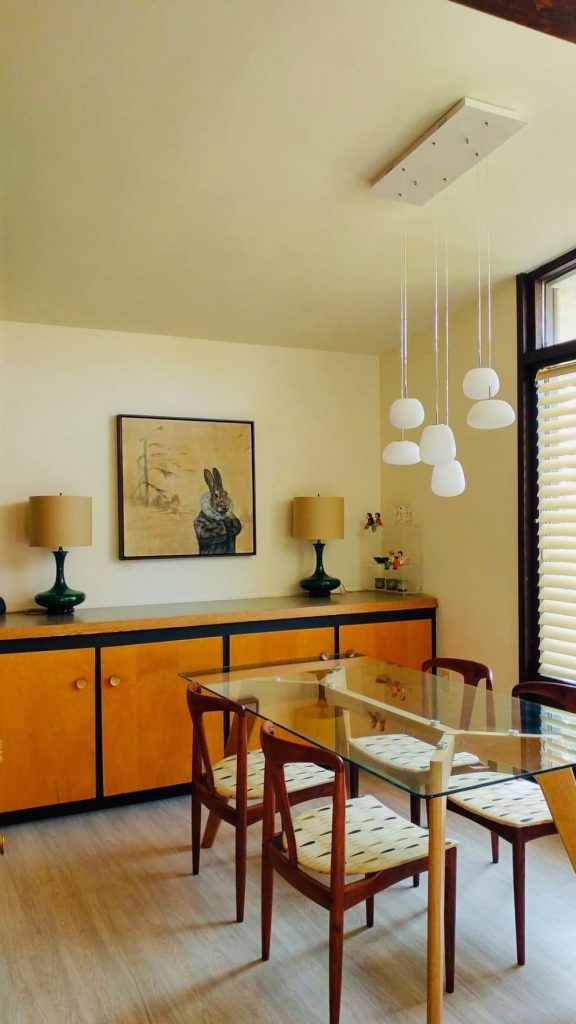
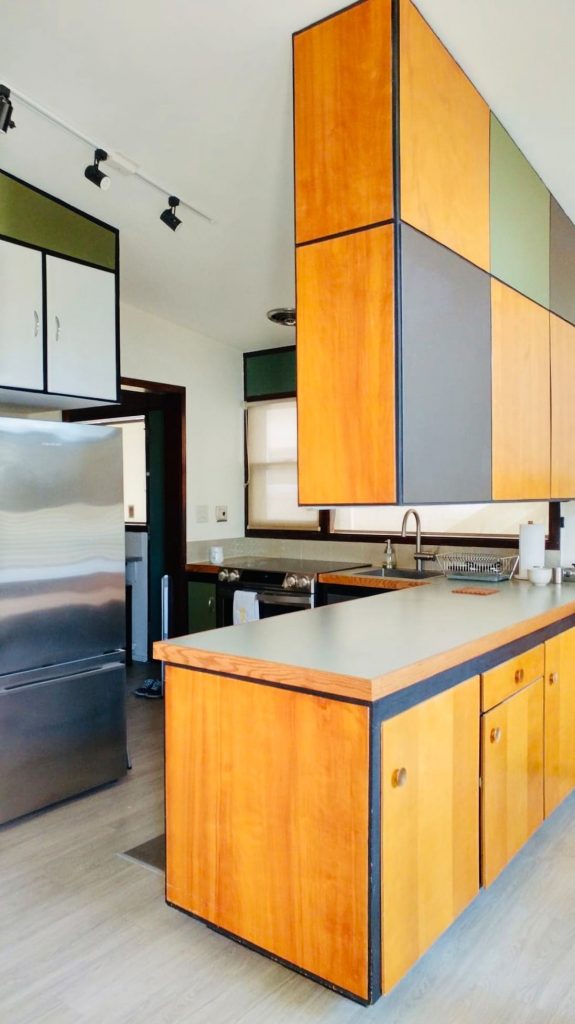
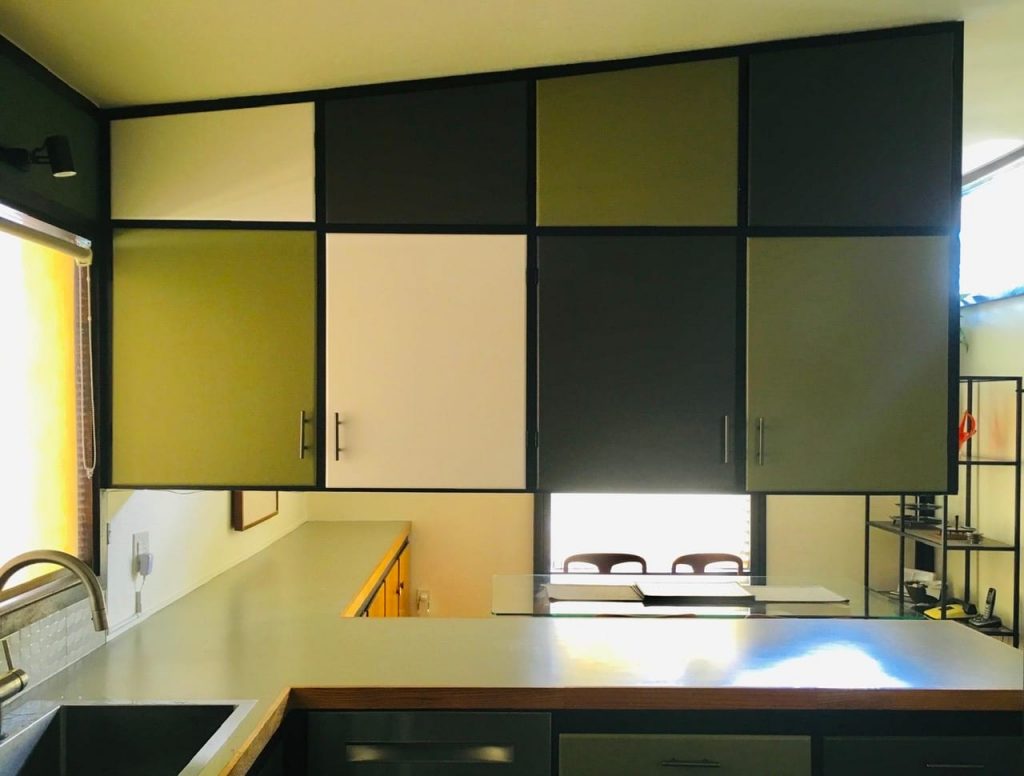
What do you know about the architect who designed your house?
Zeidler graduated from the Bauhaus after studying with disciples of Mies van der Rohe, (he credits Egon Eiermann as his ‘greatest influence’) then was offered a job at Blackwell and Craig in Peterborough. Within a couple of years, his residential designs (including our house) had earned him his first Massey Award, and he was made partner, steering the company (now Craig, Zeidler and Strong) to many major commercial projects.
Do you feel a certain sense of responsibility when living in such a beautiful house?
We feel we are custodians of the house, and as long as it’s within our power to keep it as original as we can, we will do so. If we ever had to sell, we could only sell to another midcentury modern aficionado.
Have you had to renovate any part of the house? If so, which area(s)?
There was a utility room at the end of the carport, accessible only from the outside, which we stole a piece of to add a second 2-piece bathroom off the master bedroom. In order to get the plumbing into the slab for that, we had to tunnel under the existing bathtub, so we opted to renovate the main bathroom completely, as it was in need of repair anyway.
The rest of the house required restoration: new flooring, new paint, and a new heat pump to replace the electric furnace and air conditioner. We had to replace the kitchen counter (the original arborite was quite worn after 60 years) which necessitated recreating the wood binding trim that originally surrounded it. We also reconfigured the laundry room to include a beverage area for the coffee pot, kettle etc.
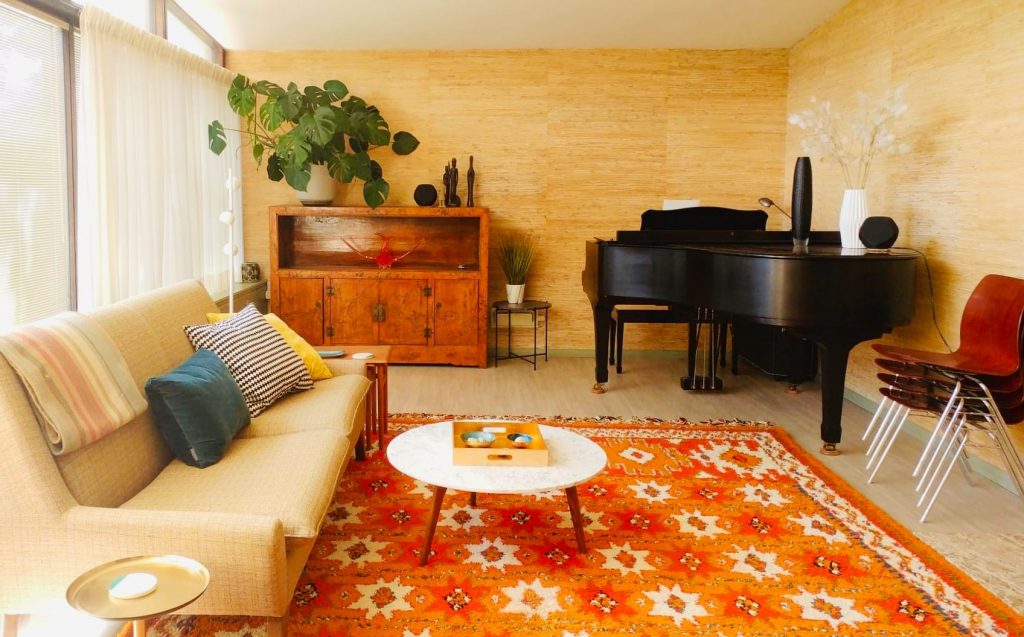
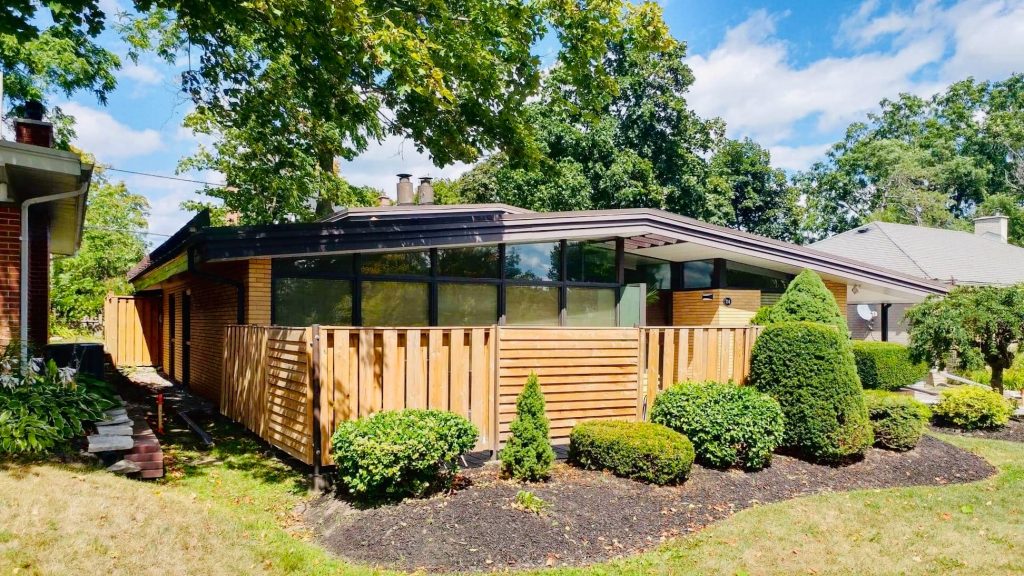
Can you share the name of the contractor and main materials you used and why?
Our contractor was Bryan McQuaid, recommended by our real estate agent. Bryan was great, he understood the importance of maintaining the design ethic of the house, and consulted us extensively on design and materials.
What are the advantages/struggles of living in a mid-century house?
All advantages, no struggles!
Big ones: The light – we have clerestory windows in the middle of the house, so there are no dark spots in the house except the bedrooms, which makes sense; High ceilings – the whole house feels so large and airy, even despite our relatively small footprint. The bathroom is 5’ x 8’ but it feels huge with its 15’ ceiling, and clerestory window light.
Sight lines – not sure if this is typical of midcentury modern architecture, but in our house there is almost nowhere in the house you can sit without a clear view across the house, making the house feel larger than it is. Clean lines – the simplicity of the design obliges us to keep clutter to a minimum, and there’s something relaxing about the lack of ornamentation in the trim, the windows and the cabinets. Compartmentalization – all the original doors remain, and the ability to close off parts of the house is periodically necessary, as we have dogs. (Note to open-concept fans!)
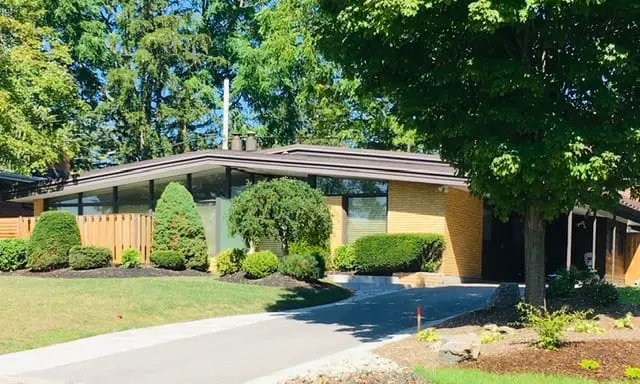
The airy floor to ceiling windows, bring plenty of light. But someone might also say, a lack of privacy. How’s your experience about that?
One of the unique features of this house is that Zeidler replaced the usual bedroom hallway with a central ‘playroom’ where we spend much of our time. The lower windows here (as in the front of the house) are covered by venetians, which maintain our privacy even though the upper and clerestory windows still allow light to stream in. In the front, the patio fence masks the living room windows from the street, and none of the windows go down to the ground except for one little one by the front door. This is the most private home we’ve ever lived in.
What’s your favourite part of the house and why?
The kitchen was originally painted in classic Mondrian white, brown and orange with black frames, but the original owner was not fond of the orange, so it had all been changed to olive green. We love this colour scheme, and recently repainted all the cabinet doors, re-matching the colours to freshen them up. Despite its relatively small size, the kitchen is incredibly efficient, and a joy to use.
Last but not least, do you have any tips for people interested in buying a mid-century house today? What should they pay attention to and why?
I think we lucked out finding a unicorn, and we’d be lying if we said we knew how to do it again.